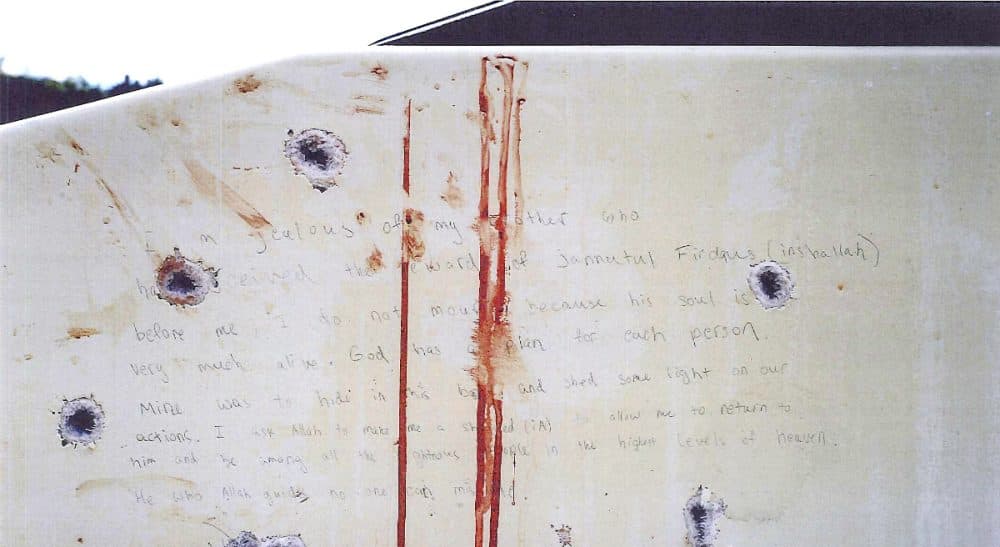Advertisement
Reliving The Horror: Contemplating The Purpose Of The Tsarnaev Trial

Together we made it from the horror of April 15, 2013 to today. With time, the vividness of the horror, and the strange communal terror that accompanied Gov. Deval Patrick's order to "shelter in place" found a place in our memories and in our understanding of our community. Indeed, our collective reaction to the horror — "Boston Strong" now is part of our city's definition. Together, we transcended the fear, supported the victims and moved forward.
From the beginning of the Tsarnaev trial last week, we have all been brought, and will be brought back again and again until the trial’s conclusion, to that day. We see it all — through the government's evidence — again and, perhaps, even more vividly than before. The murders of innocents — Martin Richard, Krystle Campbell, Lingzi Lu and Sean Collier — played out in testimony in all their unimaginable and inexplicable horror. We hear daily from survivors and investigators the details of the day and, increasingly, of the evil represented by the young man facing trial for a crime that, his lawyers admit, he and his brother committed. Given that frank admission, it is worth pausing for a moment to consider what purpose, if any, this trial serves.
One answer is that it is about punishment. The government seeks to put Dzhokhar Tsarnaev to death for his crimes. The defense's primary purpose in the trial is to save his life; there is no chance he will ever have his liberty. Nevertheless, the evidence now is about liability — the government is working to prove that Tsarnaev committed the crime. Why? Because the defense needs the jury to have the opportunity to find him guilty so that it can argue separately about whether he should be put to death.
We will, through the verdict and punishment that accompanies it, hold him responsible under our laws for his lawless action.
There's a psychology to all of this. Brief attention to the reporting from the trial reveals how graphic and disturbing the evidence is. When the presentation is over, the jury will be asked to consider Tsarnaev's guilt. They will be instructed about their responsibility to decide and about the burdens of proof they must apply. It is a solemn endeavor. They will then deliberate and, together, they will make up their mind.
The liability phase matters to the defense because it allows the jury to powerfully sanction Tsarnaev, by finding him guilty, before it considers the appropriate punishment. If there were no need to make that decision, the jury's only choice would be with regard to the penalty and its desire to send a clear message might make death a more likely choice. In this case, the defense needs to hope that the jury will feel guilt a powerful sanction, leaving it to consider the penalty separately and with less imperative to choose the most extreme outcome.
In addition to the question of punishment, the trial serves a cathartic purpose for the community (and for the victims). We are — through our government — confronting Tsarnaev with his crimes. We will, through the verdict and punishment that accompanies it, hold him responsible under our laws for his lawless action. This is our legal system at work and it is testament to its power that it is up to the task of addressing even the most hideous of events.
And, there is also psychic value in the confrontation. The people Tsarnaev hurt spoke for all of us as they confronted him. No one of them more eloquent than another. But one, Rebekah Gregory Di Martino, wrote a letter on Facebook that spoke to the power of confronting evil. She explained that she had been afraid of him (every day since the bombing) but was no longer. Because now, she wrote, "to me you're a nobody." It's not just that he is a nobody, but that he is "the defendant" in a system that we have built across the history of our country. It's a system that rightsizes horror and, when it works, holds us together.
Why have a trial? Because it offers us all, after so much time, a real opportunity to heal.
